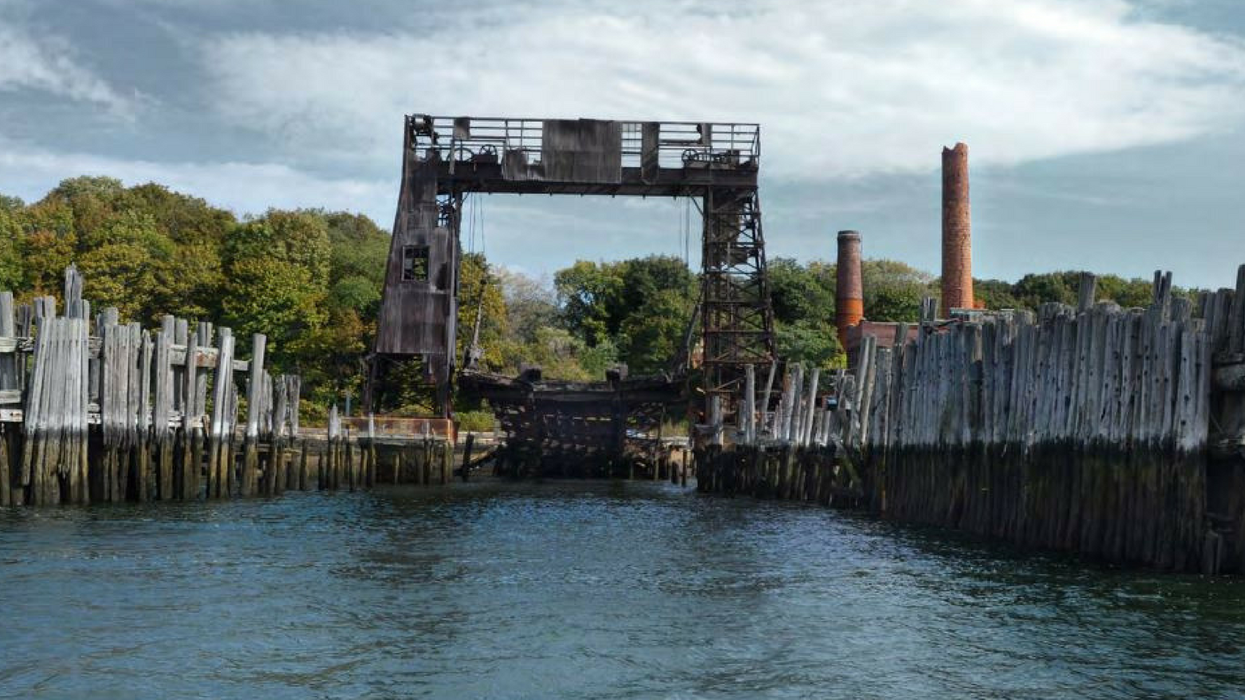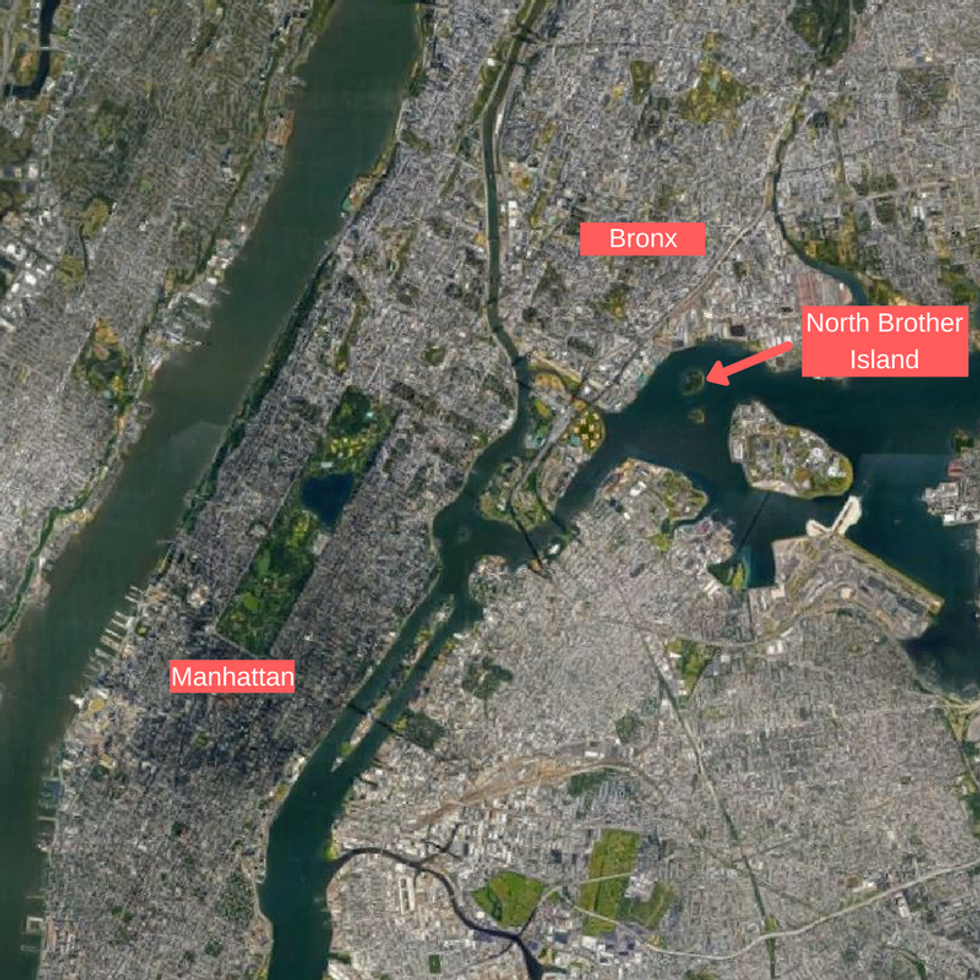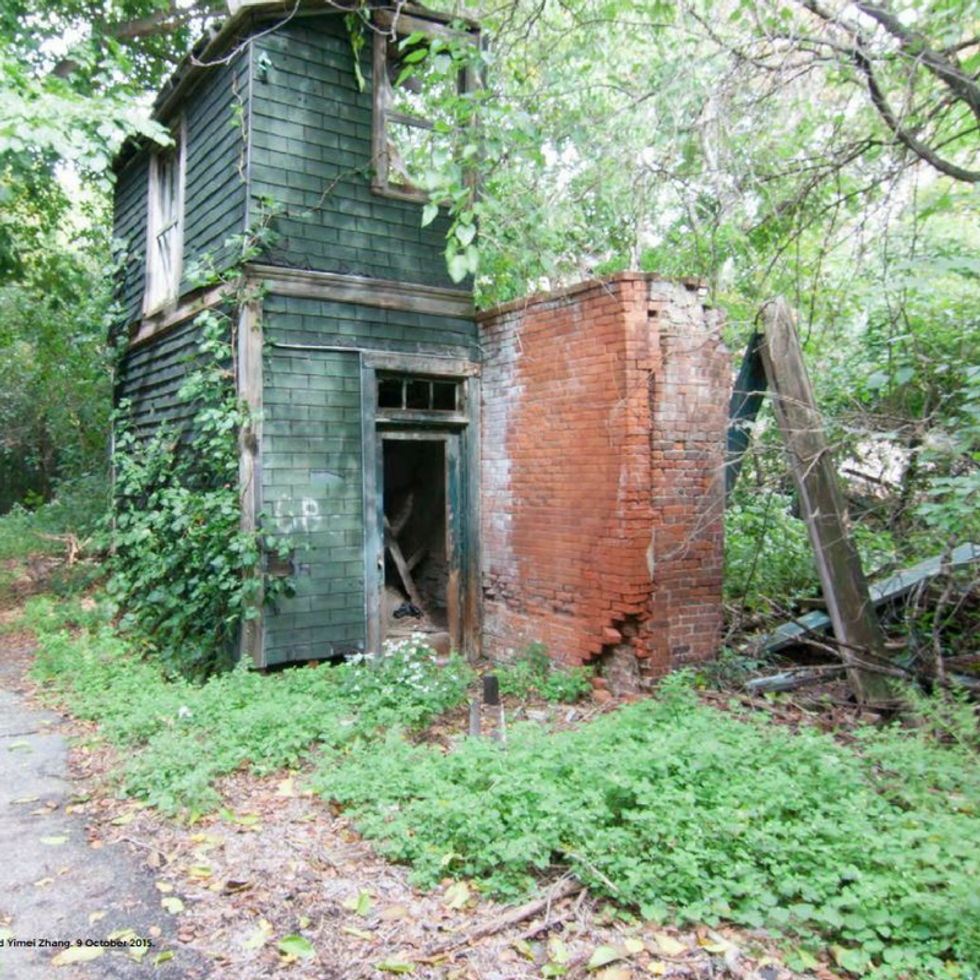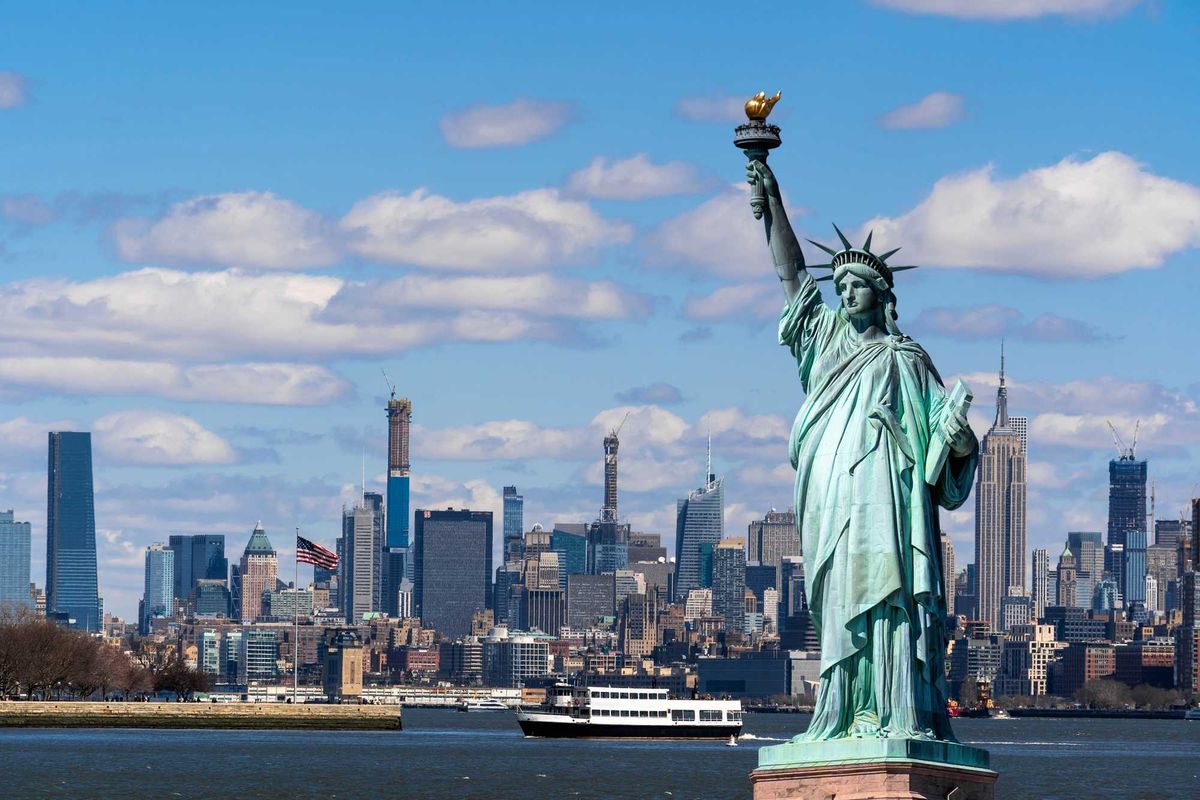Viral
Darin Graham
Jan 30, 2018

Dock ruins on North Brother Island. Picture:
PennPraxis/Evan Oskierko-Jeznacki
There’s a hidden island in New York that’s off limits to the public because it’s uninhabitable, overrun by weeds, has a sensitive ecosystem and the buildings are crumbling to the ground.
But visitors could soon be heading to the dystopian island by boat thanks to meticulously organised two-hour guided tours.
The North Brother Island was abandoned nearly 50 years ago and is now managed by New York’s Parks and Recreation Department as a wildlife reserve.
It’s a small island, at only 22-acres, and is one of the many bodies located in a dangerous stretch of the East River known as Hell Gate. The choppy portion of the river near the Bronx has claimed a number of ships throughout history.
Researchers from the University of Pennsylvania carried out a recent study into the island’s conservation and the possibility of opening it up to visitors.
The authors wrote:
North Brother Island is among New York City’s most extraordinary and least known heritage and natural places.
Randall Mason, Associate Professor at the university recalled the moment he stepped on the island, telling indy100:
Of the power of nature taking over a previously cultivated place. The buildings, though largely ruinous, look and feel like institutional building you see elsewhere around the city: campuses, schools, municipal buildings from the first half of the 20th century.So there’s a certain familiarity of the architecture, and the shock of nature asserting itself.

The researchers carried out an in-depth survey of the island and found that it's home to a rich ecosystem and has a number of birds including heron, gulls, and cormorants.
The herons have not nested among the vegetation for a number of years and conservationists continue to work to remove weeds and to encourage the bird to come and live on the island again.
Plants and trees include maple, cherry, elm, apple, virginia creepers, evening primrose, pokeweed, and jewelweed.
Professor Mason told indy100 that it is beautifully quiet on the island...
...with the rustling of trees and the sounds of the tidal river. Lots of airplanes flying overhead, too, as the island is very near LaGuardia Airport.
The feeling of isolation one gets on the island is extraordinary in the context of New York – such a dense, intense and bustling place. NBI is really suspended in its own time for now.
Though the researchers propose limited access to the island for the public through small guided tours of up to two hours, they conclude that complete access could damage its future conservation efforts and pose risk to visitors.
They add:
There is added urgency to act now in order to prevent a regrettable loss of historic resources and heritage values. The buildings and built landscape will not be recoverable in another generation.

History of North Brother Island, New York
About 2 miles from the edge of Manhattan island, famed for its tall skyscrapers, the buildings on North Border Island are in an advanced state of decay, some beyond repair or already collapsed, the researchers from the PrennPraxis arm of the University of Pennsylvania said.
In the mid-nineteenth century, when illness and disease spread across the city, the island was identified as the perfect location for the sick due to its isolation but close proximity to New York. A small quarantine hospital rose along with a lighthouse and some other hospital structures.
It grew again after a transfer of ownership to Manhattan in 1881. More facilities were built including a two-story brick hospital with the capacity for 80 patients.
During this era, disaster struck in Hell Gate when a ship carrying 1,000 German immigrants sank in the dangerous rough waters. Hospital staff from North Brother were able to save about 250 passengers, but the disaster stood as the largest loss of life in New York until September 11, 2001.
The island lacks basic amenities like electricity, water, sewage systems and emergency services.
The island was first discovered by Dutch settler Captain Adriaen Block sometime between 1611 and 1614 and remained undeveloped for almost two centuries.
Keep reading...Show less
Top 100
The Conversation (0)













